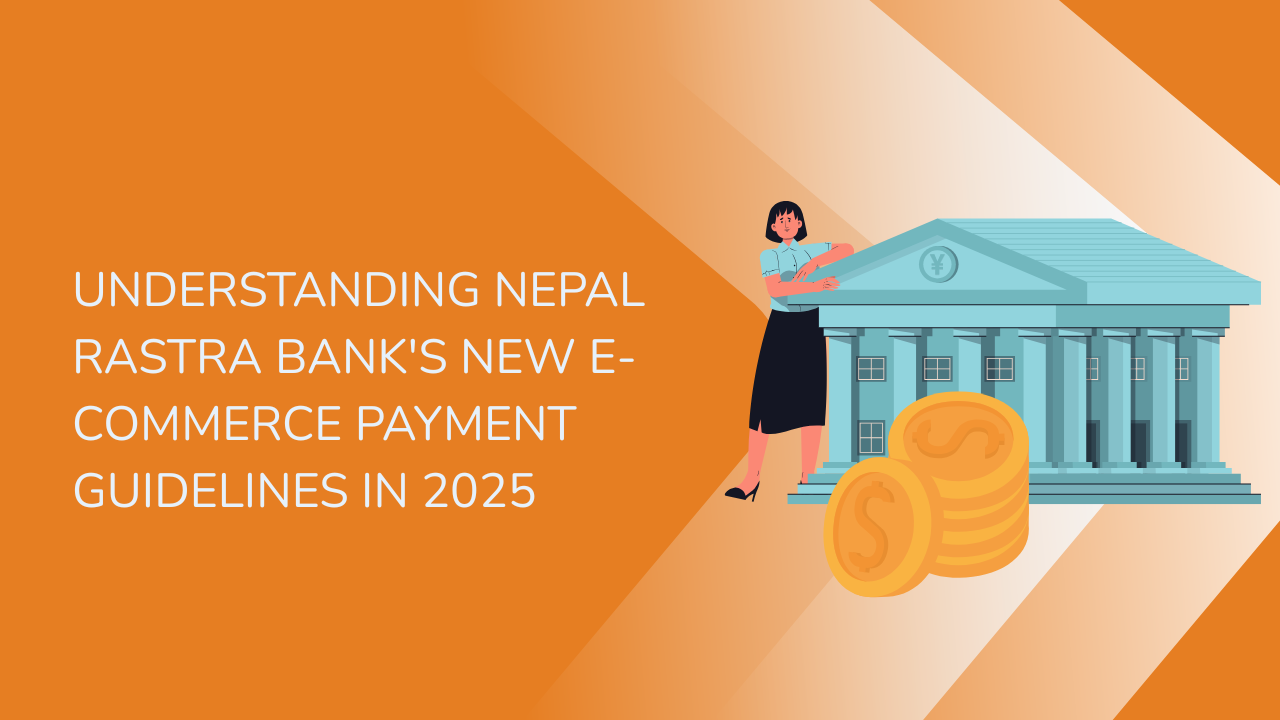Share this Article
Over the last decade, Nepal has experienced a major shift in the way people shop, largely due to the rapid growth of e-commerce. While major cities like Kathmandu, Pokhara, and Lalitpur have long been at the forefront of digital shopping, there has been a steady expansion of online shopping into Nepal's rural areas. For Direct-to-Consumer (D2C) brands—businesses that sell directly to consumers through digital platforms—rural Nepal has become an emerging market full of growth potential.
In rural regions, where traditional retail infrastructure has often been lacking, the rise of digital connectivity and mobile internet access is opening up new opportunities for D2C brands to reach previously underserved markets. This shift to digital shopping is not only changing how people in rural Nepal access products but is also transforming the way businesses operate and scale their operations beyond urban areas.
This article examines how D2C brands are leveraging e-commerce to reach rural communities in Nepal, the challenges they encounter, and the strategies they employ to succeed in these remote and underserved regions.
The Digital Shift in Rural Nepal
The e-commerce landscape in Nepal has evolved significantly in recent years, with a marked increase in internet usage, particularly via mobile devices. With the availability of affordable smartphones and decreasing data prices, internet access is becoming more widespread, even in remote areas of the country. This digital revolution has allowed rural consumers to engage with brands and make online purchases, a concept that would have seemed unimaginable in many villages just a few years ago.
Traditionally, rural areas in Nepal have relied on local markets and physical stores to meet their shopping needs. However, as access to mobile phones and the internet has grown, consumers in these areas are starting to embrace digital shopping platforms. This shift presents a significant opportunity for D2C brands, as rural consumers are now able to purchase products that were once out of reach.
In addition, many rural Nepali consumers have long been dependent on local or regional products, but with e-commerce, they now have access to a wider range of national and international D2C brands. From clothing to electronics and groceries, the options available to rural shoppers are expanding rapidly. This change is reshaping the retail environment in rural Nepal and creating new opportunities for D2C brands to enter these markets.
How D2C Brands Are Expanding Their Reach into Rural Areas
D2C brands, which are known for their direct connection to consumers, have embraced e-commerce as an essential tool to expand their presence in rural Nepal. These brands sell their products through their own websites or third-party e-commerce platforms, eliminating the need for traditional retail intermediaries.
Here are some of the key strategies D2C brands use to expand their reach into rural Nepal:
1. Tailored Online Presence
For D2C brands to succeed in rural Nepal, it is crucial to adapt their online presence to meet the needs of these communities. This means designing websites and platforms that are easy to use, mobile-friendly, and available in local languages and dialects. Many rural Nepali consumers speak languages like Maithili, Bhojpuri, and Newar, so offering a localized shopping experience in these languages can help brands connect more effectively with their target audience.
Social media platforms like Facebook and YouTube, which are widely used in rural Nepal, offer an ideal way for D2C brands to showcase their products and engage with rural consumers. By creating content in local languages and highlighting products that meet the needs of rural shoppers, brands can build stronger connections with their audience and increase brand visibility.
2. Affordable and Accessible Delivery Services
One of the biggest obstacles D2C brands face when trying to reach rural Nepal is logistics. Unlike urban areas with well-established delivery systems, rural areas often lack efficient and reliable infrastructure, making it challenging to ensure timely delivery of products. To overcome this hurdle, D2C brands are partnering with local courier services and e-commerce platforms that already have a presence in rural areas.
Many D2C brands are also offering flexible delivery options, such as cash on delivery (COD), which is a popular payment method in Nepal. COD allows customers to pay for products only when they are delivered, which is particularly useful for rural consumers who may be wary of online payment systems. By offering COD and partnering with local delivery agents, D2C brands can expand their reach and improve the accessibility of their products.
3. Collaborations with Local Influencers and Community Leaders
Influencer marketing is an effective tool for promoting D2C brands in many regions, and this is also true for rural Nepal. However, in rural areas, traditional influencers may not have the same influence as local figures who are deeply embedded in the community. D2C brands are increasingly working with local influencers, community leaders, and trusted figures to build brand awareness in rural areas.
These community leaders, such as village elders, teachers, or well-known local figures, have strong credibility and influence among rural consumers. By partnering with these individuals, D2C brands can effectively promote their products in rural markets and build trust within local communities. This localized influencer marketing strategy helps create a more authentic and relatable connection with rural consumers.
4. Product Customization for Rural Consumers
To successfully cater to rural customers, many D2C brands are customizing their products to better suit the preferences and lifestyles of rural Nepalese consumers. For example, clothing, household items, and even beauty products may need to be adapted to reflect local tastes, cultural preferences, and climate conditions.
Some D2C brands are focusing on providing locally relevant products, such as farming tools, organic foods, and health supplements. By offering products that directly meet the needs of rural communities, these brands can establish strong customer loyalty and build a lasting relationship with rural shoppers. Additionally, incorporating traditional Nepali designs or motifs into products can further resonate with the cultural values of rural consumers.
5. Educating Consumers About E-Commerce
Although mobile internet usage is on the rise, many rural consumers in Nepal remain unfamiliar with the process of online shopping. To address this gap, D2C brands are investing in educational campaigns aimed at teaching rural consumers how to use e-commerce platforms. These campaigns include creating easy-to-understand tutorials, guides, and videos that explain how to browse products, place orders, and make secure payments.
Brands are also working with local retailers, community groups, and NGOs to promote e-commerce literacy. Initiatives like mobile phone training sessions or workshops that teach people how to use digital platforms can empower rural communities and encourage more people to engage in online shopping. This not only benefits the brands but also contributes to the overall development of digital skills in rural areas.
Challenges Faced by D2C Brands in Reaching Rural Nepal
Despite the opportunities, there are several challenges that D2C brands encounter when trying to expand into rural Nepal:
- Logistical Issues: Poor road infrastructure and limited delivery networks in rural regions can make it difficult for brands to deliver products efficiently and cost-effectively. Last-mile delivery in remote areas often requires additional effort and resources, which can increase delivery times and costs.
- Digital Literacy: While internet usage is growing, many rural consumers still lack the skills to navigate e-commerce websites or understand online payment systems. Brands must invest in educating consumers and providing customer support to help them adapt to online shopping.
- Payment Barriers: Although cash on delivery is a popular payment method in Nepal, digital payment systems are not always accessible to rural consumers, especially in areas where banking infrastructure is limited. This can make it harder for D2C brands to adopt online payment solutions.
- Trust and Security: Many rural consumers are hesitant to engage in online shopping due to concerns about the authenticity of products, delivery reliability, and the security of online transactions. Brands must work hard to build trust through transparency, reliable service, and clear communication.
The Future of D2C E-Commerce in Rural Nepal
The potential for D2C brands to succeed in rural Nepal is vast. As mobile internet penetration continues to rise and digital literacy improves, more rural consumers will engage with e-commerce. This growth will be further fueled by better delivery infrastructure, more localized marketing efforts, and the increasing popularity of mobile shopping.
D2C brands that are able to adapt their business models to meet the unique needs of rural consumers will have a competitive edge in these markets. By focusing on localized marketing, community partnerships, and offering tailored products, brands can establish a strong foothold in rural Nepal and create lasting relationships with customers.
Ultimately, the continued growth of digital commerce will benefit both consumers and businesses in rural Nepal. As D2C brands become more attuned to the needs and preferences of rural consumers, they will not only grow their businesses but also contribute to the broader digital and economic development of the country.
Categories:
E-commerce Tips & Tutorials
,
Marketing & Growth
,
SEO & Content Marketing
,
Beginner’s Guides
,
Sales & Conversion
,
Success Stories & Case Studies
,
Platform Features & Updates
,
Platform Comparisons
Tags:
Online Store in Nepal
,
5 Simple Steps
,
local businesses
,
e-commerce app
,
Small Business
,
strong brand
,
E-commerce
,
Role of Social Media
,
Growing sales
,
strategies
,
Social media
,
Logistics
,
Delivery Networks
,
Flexible Delivery
,
Mobile Platforms
,
Web
,
SEO
,
search engine optimization






